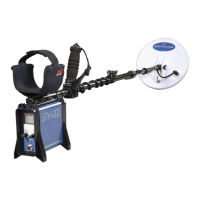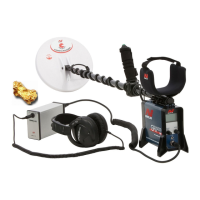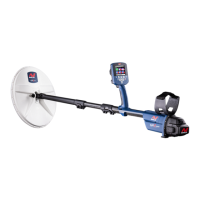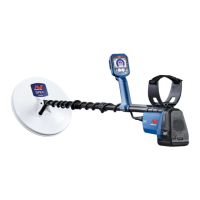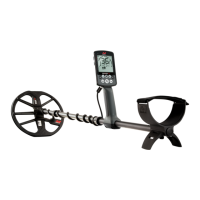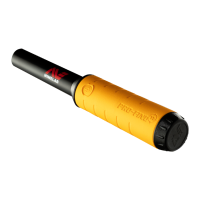14
CONTENTS
Double-D Coil Noise Cancel Procedure
The GPX 6000™ Double-D coil excels in locations that have very high levels of
interference. They are less noisy than mono coils, but also provide less depth.
Generally, a Double-D coil should only be used if noise cannot be managed by using a Mono coil with the Noise Cancel
Procedure (page 13).
This procedure can be used in areas that have known high levels of EMI or very conductive (salty) soils.
START `
1. Connect the GPX 14™
Double-D coil.
Turn off the detector and change to a Double-D coil
(see "Changing the Coil" on page 9).
2. Hold the coil 100 mm (4 in)
above the ground.
100 mm (4")
Hold the coil still and 100 mm (4 in) above, and parallel to the
ground — the ground must not contain metal targets.
3. Turn the detector on.
Turn the detector on.
4. Ensure the Double-D mode
is set to EMI Cancel.
Long press for at
least 2.5 s
To set the Double-D mode to EMI Cancel, long press the Noise
Cancel button for at least 2.5 seconds.
5. Hold the coil still above the ground
and assess noise levels.
Hold the coil still and as close and parallel to the ground as
possible. Listen carefully to the signals; there should be audible
tone variation, but not so much that signals sound erratic or noisy.
` Begin detecting.
` If the detector is still noisy, continue to the next step.
6. Noise Cancel.
Conduct the Noise Cancel Procedure (page 13). This will
remove noise caused by EMI.
` Begin detecting.
` If the detector is still noisy, continue to the next step.
7. Reduce the sensitivity level.
Reduce the sensitivity level.
Swing the coil close and parallel to the ground when adjusting
the sensitivity in order to remove ground noise.
` Begin detecting.
` If the detector is still noisy, change to an Auto sensitivity setting (Auto or Auto+).
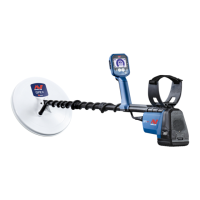
